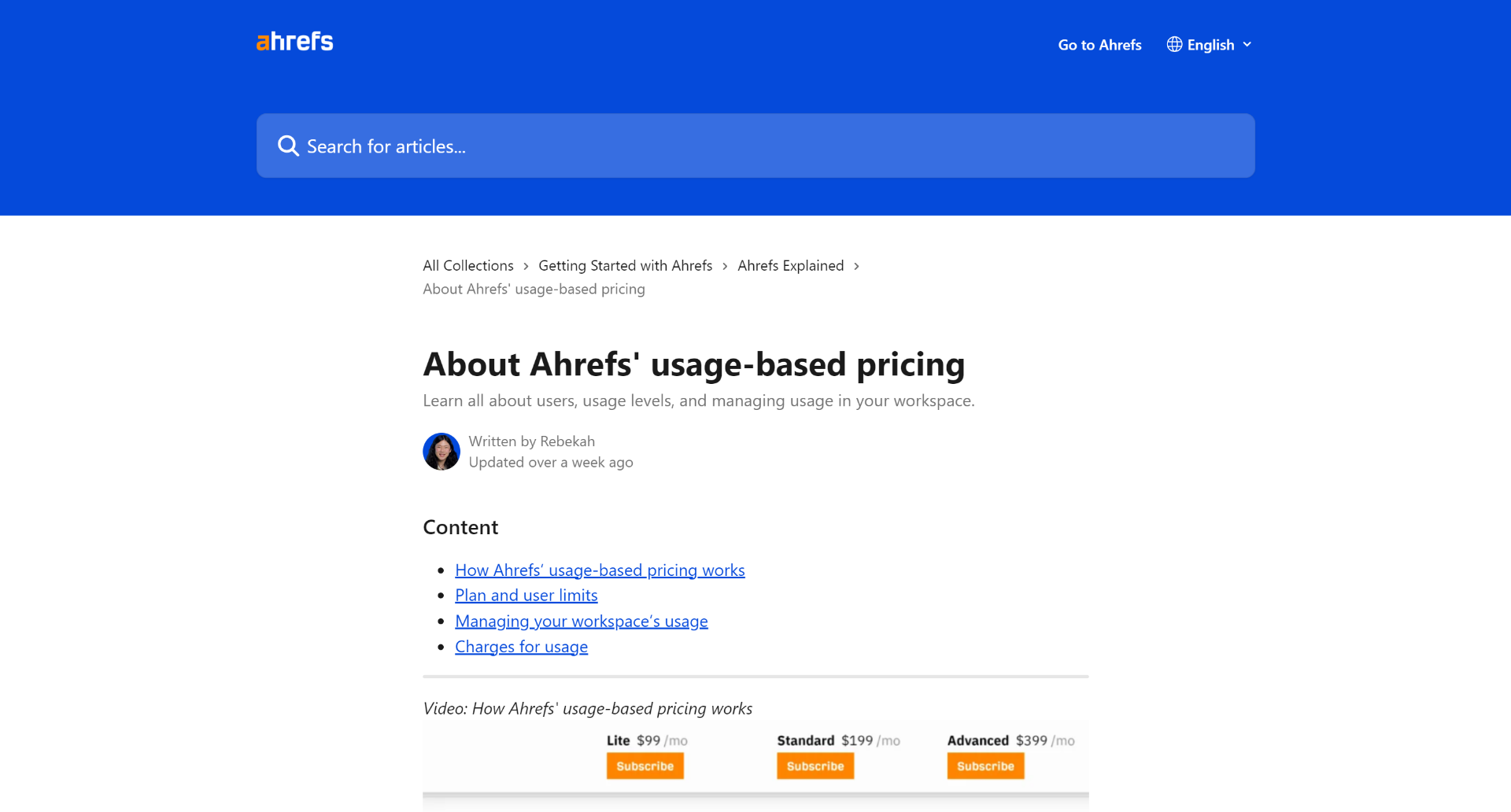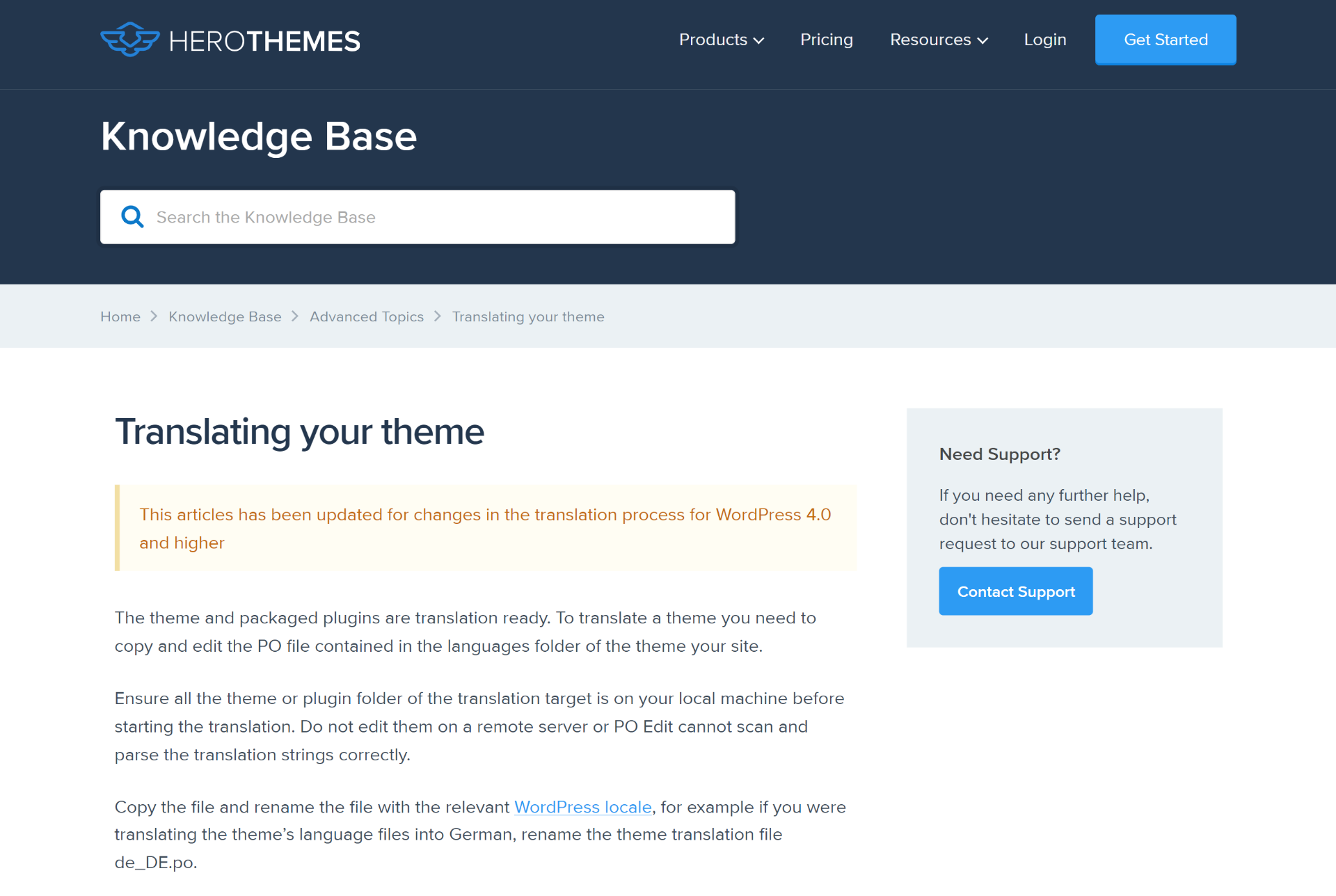
In the world of constantly evolving technology, it’s common to grapple with the functioning of a new device or software, desperately seeking guidance amidst a sea of buttons and options.
User guides could be the solution here!
A user guide is a comprehensive document that provides step-by-step instructions on using a product or service effectively. This blog will look into types of user guides, their business benefits, software for creating user guides, and more.
What Is a User Guide?
A user guide, an essential form of technical documentation, is like a roadmap for customers and end-users. It offers clear, step-by-step instructions to carry out a task or process.
You’ll get a user guide when you purchase a new physical product (like a piece of furniture) or a digital product or software.
User guides come in various easy-to-understand formats, from PDFs and video tutorials to help guides and interactive in-app guidance.
These guides serve as your tech assistant, helping you to integrate the technology systems into your daily routines smoothly.
They play an essential role in ensuring that technology systems are adopted correctly, which in turn helps to achieve the desired business outcomes. So, whether setting up a new bookshelf or navigating a new software, a user guide is your go-to resource.
Read More: What Is a Product Manual & How to Create One – The Complete Guide
What Information Do User Guides Have – Essential Elements of User Guides
User guides typically contain a wide range of information to assist users in understanding and utilizing a product effectively.
The information included may vary depending on the nature of the product or software, but here are some common elements in user guides:
- Introduction: An overview of the product, its purpose, and its intended audience.
- Installation and Setup: Step-by-step instructions on how to install and set up the product.
- Getting Started: Basic instructions on using the product, such as navigating the user interface, accessing features, and performing essential tasks.
- Features and Functionality: Detailed explanations of all the product’s features and how to use them. This section could include examples, screenshots, or diagrams to illustrate concepts.
- Troubleshooting and FAQs: Common issues users may encounter and troubleshooting steps to resolve them. Frequently asked questions and solutions are often included as well.
- Tips and Best Practices: Additional recommendations on optimizing the user experience, increasing productivity, or achieving specific goals using the product.
- Technical Specifications: Detailed information about the product’s technical requirements, compatibility with other systems, and any limitations or known issues.
- Glossary: Definitions of key terms and acronyms used throughout the user guide to aid understanding.
- Index or Table of Contents: A navigational aid to help users quickly find specific topics or sections within the user guide.
Read More: How to Create a User Manual Online for Free – Step-by-Step Guide
What Are the Different Types of User Guides?
User guides come in different types to cater to different needs and preferences, providing users with valuable information to maximize their understanding and utilization of a product.
1. Instruction Manuals
Instruction manuals provide detailed step-by-step guidance on how to set up, operate, and troubleshoot a product or service. They are comprehensive and cover various topics to ensure users can effectively use the product.
For example, a digital camera user guide would provide step-by-step instructions on setting up, operating, and troubleshooting the camera.
2. Quick Start Guides
Quick start guides are brief documents for helping users start quickly with a product or service. They focus on essential steps and key features, allowing users to begin using the product without delving into extensive details.
For example, a quick start guide for a software application would offer concise and straightforward instructions for users to get started swiftly.
3. Troubleshooting Guides
Troubleshooting guides are created to assist users in identifying and resolving issues with a product. They normally list common problems and provide step-by-step solutions or workarounds to address them.
For example, a home appliance troubleshooting guide would outline common issues and provide solutions to help users address problems independently.
4. Installation Guides
Installation guides provide detailed instructions on correctly installing and configuring a product, be it software, hardware, or another component type. They ensure that users set up the product correctly for optimal performance.
For example, an installation guide for a computer hardware component would offer detailed instructions on correctly installing and configuring the device.
5. Reference Manuals
Reference manuals give extensive information about a product’s features, functions, and technical specifications. They serve as a detailed resource for users who need in-depth information, often used by developers or advanced users.
For example, a programming language reference manual would provide in-depth information about syntax, functions, and usage for developers.
6. Policy and Procedure Manuals
Policy and procedure manuals outline a company’s rules, guidelines, and protocols. They provide employees with information on company policies, expectations, and procedures they must follow.
For example, an employee handbook would be a policy and procedure manual outlining company policies, guidelines, and codes of conduct.
7. Training Manuals
Training manuals are crafted to support the training process for new employees or users. They cover onboarding procedures, job responsibilities, and other information essential for effective training.
For example, a training manual for new employees would cover onboarding processes, job responsibilities, and company culture.
8. FAQ Guides
FAQ guides detail frequently asked questions along with their answers. They serve as a quick reference for users seeking solutions to common queries, reducing the need for extensive customer support.
For example, an FAQ guide for a software application would address frequently asked questions and provide solutions to common user queries.
9. Safety Manuals
Safety manuals give information on safety protocols, emergency procedures, and guidelines for ensuring a secure environment. They are crucial in industries where safety is a top priority.
For example, a manufacturing plant safety manual would outline safety protocols, emergency procedures, and hazard prevention measures.
10. Software User Guides
Software user guides provide comprehensive information about using a software application. They cover features, functionalities, settings, and customization options, helping users navigate and make the most of the software.
For example, a comprehensive user guide for graphic design software would cover all features, tools, and functionalities to help users maximize the use of their applications.
Read More: User Manual Software & Tools for 2024
What Are the Benefits of User Guides?
By investing in robust user guide software, businesses can provide valuable resources that help users get the most out of their products. Some of the most significant business benefits are:
Enhanced User Experience
User guides improve the user experience by providing clear and concise instructions. Users who can easily understand and navigate a device or software product are more likely to have a positive experience.
For example, a user guide for a mobile banking app can provide instructions on how to set up an account, transfer funds, and access various features, making it easier for users to manage their finances.
Reduced Support Costs
User guides significantly reduce the need for customer support by providing self-help resources. It reduces the burden on customer support teams when they easily find answers to their questions or troubleshoot issues independently.
For example, an online knowledge base for a software product could include comprehensive articles and FAQs addressing common user queries, reducing the number of support tickets and inquiries.
Increased Efficiency
User guides help users learn how to use a product efficiently and effectively. They can quickly learn to navigate and utilize the product’s features by providing targeted and detailed guidance.
For example, a training manual for an email marketing platform provides step-by-step instructions on creating and sending an email campaign, helping users complete the task efficiently and achieve their marketing goals.
Improved Customer Satisfaction
User guides that are accurate, helpful, and easy to understand improve customer satisfaction. Users appreciate having access to resources that address their needs and provide solutions.
For example, an extensive instruction manual for a digital camera can help users understand the different functions and settings, leading to better-quality photos and a more satisfactory user experience.
Competitive Advantage
User guides give a competitive advantage by showcasing a business’s commitment to customer support and satisfaction. Companies that offer high-quality user guides can differentiate themselves from competitors and attract more customers.
For example, a company that manufactures smart home devices may provide detailed installation guides and video tutorials, demonstrating their commitment to customer success and giving them an edge over competitors with limited documentation.
How to Create a User Guide
Creating a user guide requires a strategic process to ensure clarity and user satisfaction. Let’s discuss the key steps involved in creating a user guide.
1. Analyze the Audience
This step involves understanding the characteristics of your target audience. Consider their prior knowledge, technical expertise, and familiarity with the product or service.
This analysis helps you determine the appropriate level of detail and the use of technical terms in the user guide.
For example, if your audience consists of beginners, you may need to explain more and avoid assuming prior knowledge.
2. Express the Objective of the User Guide
Thoroughly define the purpose of the user guide, which involves identifying what users should be able to achieve after reading the guide.
By detailing clear objectives, you can focus on providing the necessary information and avoid overwhelming users with unnecessary details.
For example, if a software user guide aims to help users troubleshoot common issues, ensure the troubleshooting steps are clearly outlined.
3. Classify the ‘How-To’ Steps and Use Sequential Steps
Break down complex processes or tasks into small, manageable steps.
Begin with an introduction or overview of the process, then divide it into ordered or sequential steps. Bullet points or numbered lists can help present these steps.
For example, if you are crafting a user guide for a recipe app, a step-by-step breakdown can include selecting a recipe, gathering ingredients, following the cooking instructions, and serving the prepared dish.
Read More: Best Process Documentation Tools in 2024
4. Map the User’s Journey
Analyze users’ interaction with the product or service by considering the typical path or workflow users follow to accomplish their goals.
By mapping this user journey, you can structure the user guide logically and intuitively. This ensures users can quickly locate the information they need at each stage.
For example, in a user guide for an e-commerce website, the user journey may involve creating an account, browsing products, adding items to a cart, and completing the checkout process.
5. Choose or Create a Template
Design the format and layout of your user guide. You can choose a pre-designed template that suits your needs or create a customized template from scratch that aligns with your brand identity.
Ensure the template includes sections for headings, subheadings, and clear visual elements for easy navigation.
Consistency in design helps users quickly find information and improves the overall user experience.
6. Include a Table of Contents
Add a table of contents at the beginning of the user guide to give users an overview of its structure and help them quickly locate specific topics or sections.
Break down the content into meaningful sections and subsections, each with a clear title.
For example, in a user guide for a software program, the table of contents could list sections such as Installation, Getting Started, Advanced Features, and Troubleshooting.
7. Use Simple Language and Write Concisely
Focus on keeping the language plain and simple to explain concepts and instructions. Avoid technical jargon or complex terminology.
Write in a conversational tone to make the content more user-friendly. Keep sentences and paragraphs concise, focusing on important information.
Include comprehensive explanations, but avoid overwhelming users with unnecessary details. Use examples and visuals to enhance understanding.
Consider the user’s perspective and anticipate any questions or confusion while following the instructions.
8. Incorporate Suitable Graphics
Visual elements can significantly enhance the clarity and usefulness of your user guide. Include relevant graphics like diagrams, screenshots, flowcharts, or illustrations.
These visuals can help users understand complex processes or concepts more quickly.
For example, if you are writing a user guide for a smartphone, include screenshots or annotated diagrams to show users how to navigate through different menus and settings.
9. Format for Easy Readability
Ensure that your user guide is formatted correctly and easily read. Use clear headings and subheadings to structure the content.
Break down complex information into bullet points or numbered lists for clarity.
Maintain consistent formatting throughout the document, such as font styles, sizes, and spacing. Use appropriate highlighting or bolding to emphasize important points.
Consider the use of white space to enhance readability and avoid cluttered layouts.
10. Validate Document Steps and Proofread the Content
Before finalizing your user guide, validate the steps and instructions by following them yourself.
This will help you identify any inaccuracies or gaps in the information.
If possible, test the instructions with intended users and gather feedback to improve the guide further.
Finally, thoroughly proofread the content to check for grammatical errors, spelling mistakes, and ensure clarity and consistency in language and tone.
Read More: Best User Guide Templates & How to Create a User Guide with Examples
Examples of User Guides in Action
User guides help users understand how the product functions and serve as reference type information to such guides.
The following are some examples of efficient user guides in action.
1. Google

Google has different user manuals or documentation pages for each of its products. You can see information and answers to common questions on the Google Help portal, where you can also submit feedback or ask questions in community forums.
2. DigitalOcean

Instead of traditional help pages, DigitalOcean has a Community page where users can find documentation, resources, forums for asking questions, and written tutorials. The community itself provides a lot of support.
3. Slack

Slack’s Help Centre documentation provides information on how to use the platform effectively. Its user manual and internal knowledge base help customers understand the product better.
4. Ahrefs

Ahrefs’ user documentation is designed to make it easy to understand their software, which can be complex. The Ahrefs Help Center answers customers’ queries directly and treats their documentation like a blog page with detailed articles explaining the product’s unique features.
5. KnowAll

KnowAll helps users find helpful answers and guides for essential questions. The search results are displayed in real-time as part of the search form, so users can quickly find help pages related to their search keywords without clicking multiple times.
Take User Experience Up a Notch With Detailed User Guides
A user guide is essential for providing users with detailed instructions and information on using a product or service effectively. With the steps outlined in this article, you can create user guides that cater to your audience’s needs and help them easily navigate your offerings.
ProProfs Knowledge Base simplifies creating user guides with its AI text editor to help you create clear, concise content with pre-built prompts. Its comment-based collaboration feature allows users to provide feedback and suggestions, ensuring a collaborative approach to guide creation.
With multi-branded sites, you can customize the look and feel of your user guides to match your brand’s identity. The revision history and version control features ensure you can track changes, revert to previous versions if necessary, and maintain accurate and up-to-date guides.
FREE. All Features. FOREVER!
Try our Forever FREE account with all premium features!







